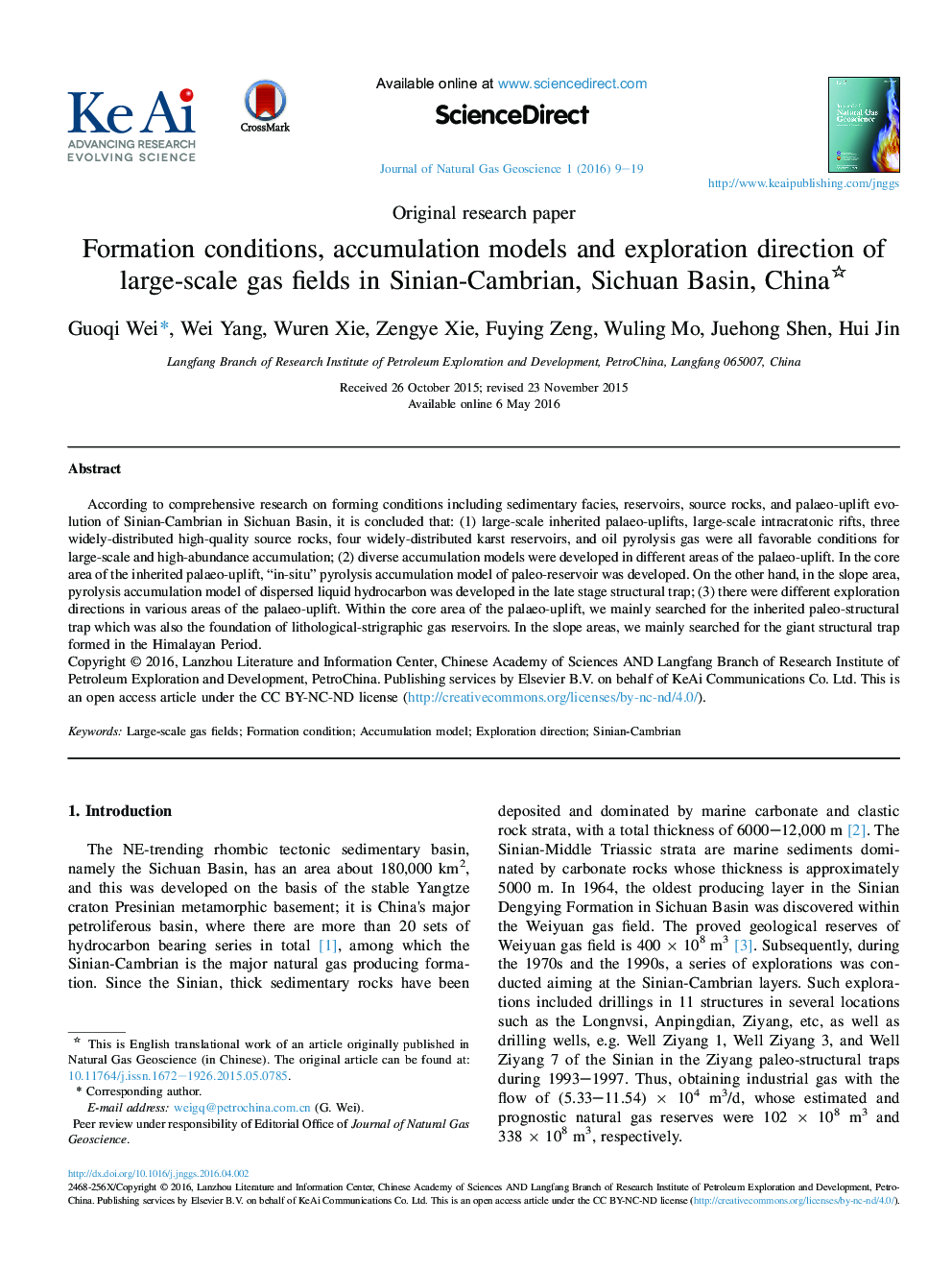| Article ID | Journal | Published Year | Pages | File Type |
|---|---|---|---|---|
| 1754470 | Journal of Natural Gas Geoscience | 2016 | 11 Pages |
According to comprehensive research on forming conditions including sedimentary facies, reservoirs, source rocks, and palaeo-uplift evolution of Sinian-Cambrian in Sichuan Basin, it is concluded that: (1) large-scale inherited palaeo-uplifts, large-scale intracratonic rifts, three widely-distributed high-quality source rocks, four widely-distributed karst reservoirs, and oil pyrolysis gas were all favorable conditions for large-scale and high-abundance accumulation; (2) diverse accumulation models were developed in different areas of the palaeo-uplift. In the core area of the inherited palaeo-uplift, “in-situ” pyrolysis accumulation model of paleo-reservoir was developed. On the other hand, in the slope area, pyrolysis accumulation model of dispersed liquid hydrocarbon was developed in the late stage structural trap; (3) there were different exploration directions in various areas of the palaeo-uplift. Within the core area of the palaeo-uplift, we mainly searched for the inherited paleo-structural trap which was also the foundation of lithological-strigraphic gas reservoirs. In the slope areas, we mainly searched for the giant structural trap formed in the Himalayan Period.
